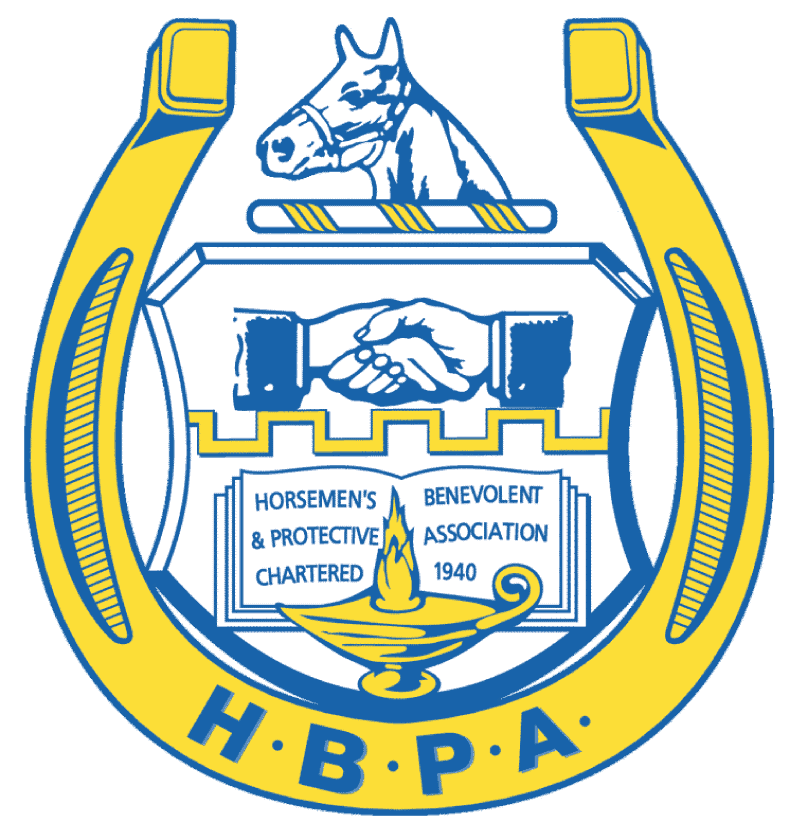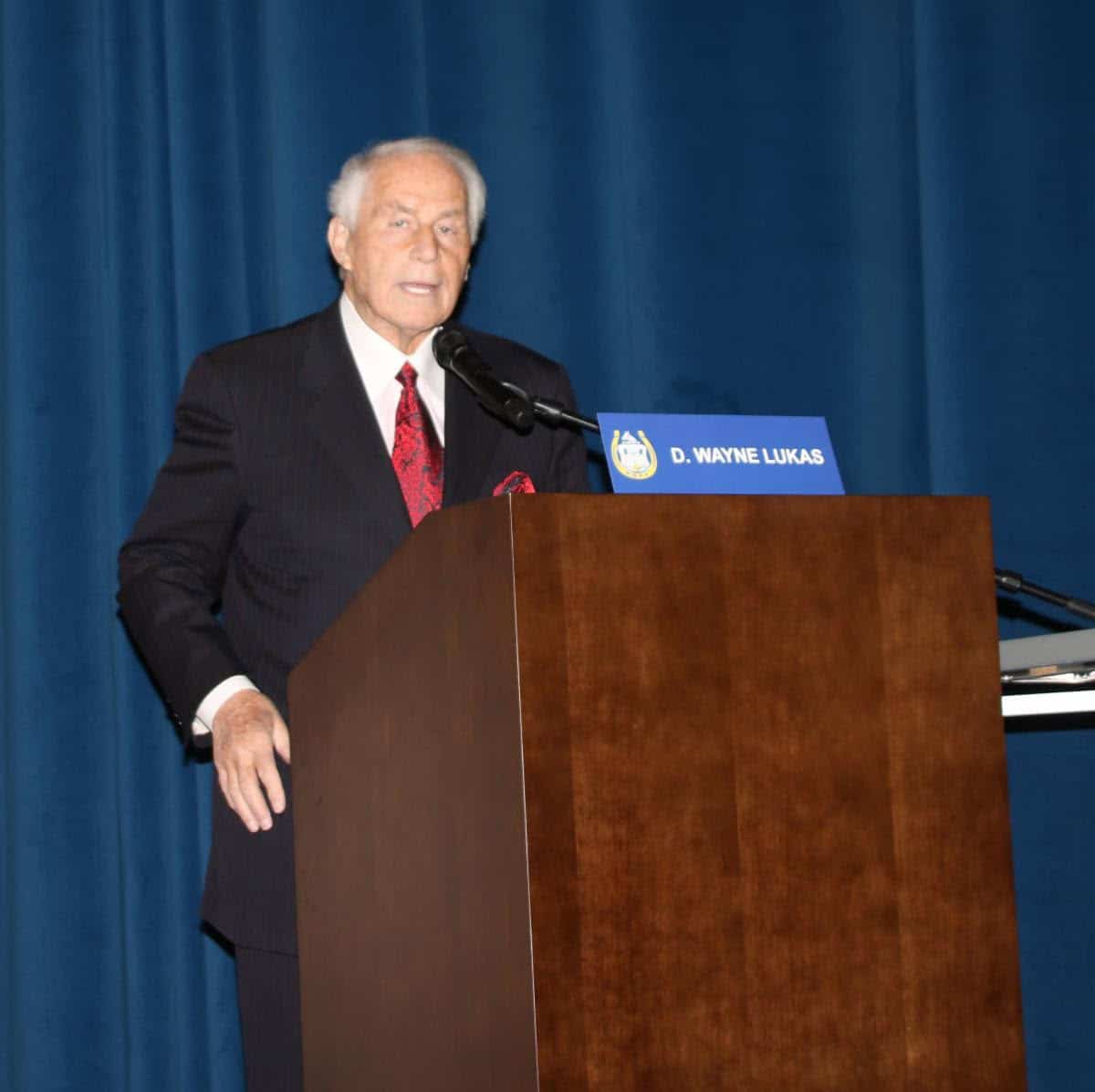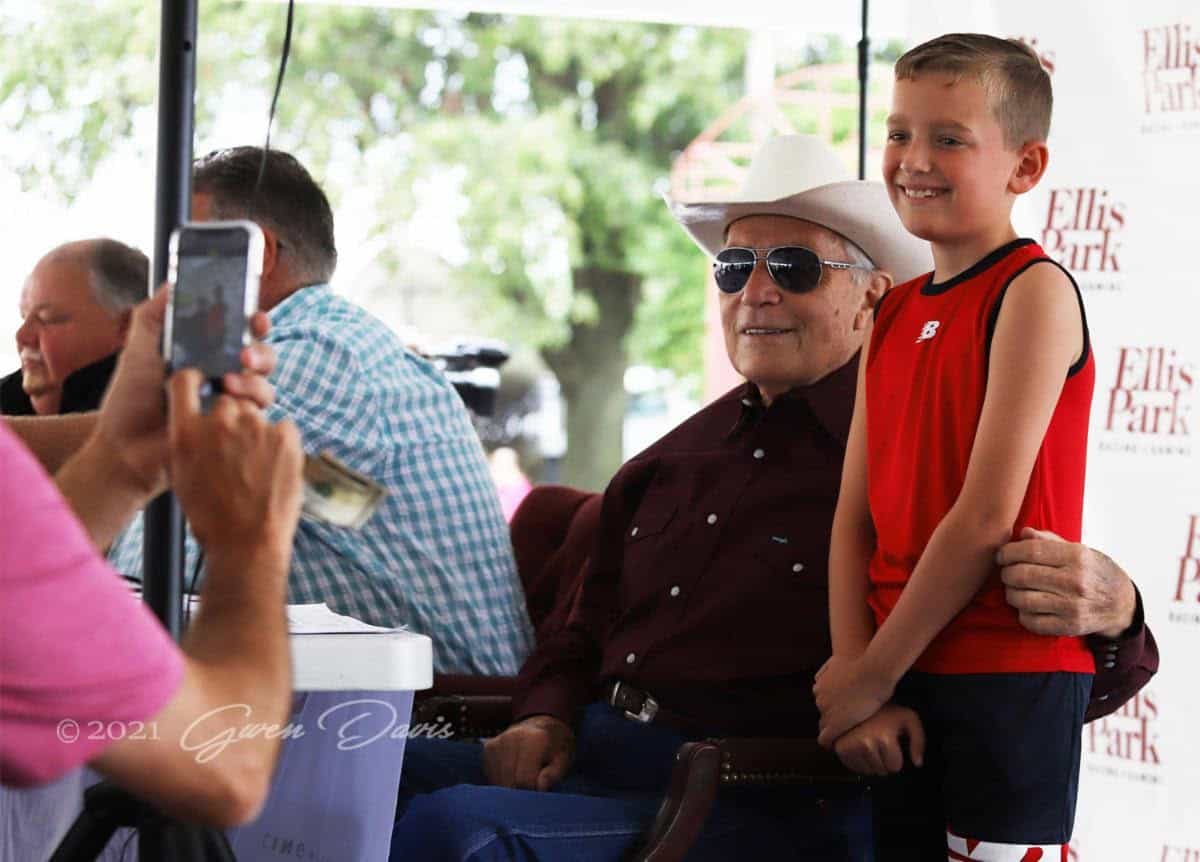Stewards’ decisions highlight need for consistency, explanation
Daily Racing Form
Three separate inquiries at Gulfstream Park on Feb. 21, including one resulting in the disqualification of the favorite in the Fountain of Youth Stakes, immediately raised the hackles of bettors, racing fans, and trainers, who collectively rallied around one point: consistency.
To many critics of one or more of the stewards’ decisions that day, it wasn’t that the stewards made one particularly egregious call. It was that the stewards, in the critics’ opinions, did not apply the same criteria to each of the incidents.
“When taken on their own,
That idea of consistency, however, is slippery, according to stewards. Like Tolstoy’s unhappy families, every incident on the racetrack is unique in its own way, stewards emphasize. Though two incidents may appear to be identical to the racing fan – such as the final two races on the Fountain of Youth card – subtle differences in how the races set up, in the amount of contact in the incident, and in the momentum of the affected horses give each inquiry its own character.
“It’s tough to be consistent day in and day out because the races aren’t consistent,” said Dan Fick, the director of racing at Remington Park who has four decades of experience in the racing industry, including stints in the stewards’ stand. “No two incidents are the same.”
What is not in dispute is that consistency is the ideal. From jockeys to trainers to racing fans to stewards, all contend that in a perfect world, some principals involved in an inquiry might be chagrined at being taken down or having had a competitor’s number stay up, but at least no one could argue that the stewards made a different call under identical circumstances in the past.
But that is far easier said than done. First off, stewards, like officials in all sports, are human beings, with all the associated prejudices, strengths, and shortcomings. They are asked to judge incidents that involve unpredictable animals who don’t talk or make excuses, and, in the course of determining their judgments, they interview jockeys who have a financial stake in the result of the decision. And, of course, there is no hard and fast definition of actionable interference: One steward’s egregious collision with a hard-charging freight train is another steward’s light brush against a hopelessly tiring horse destined to be an also-ran.
For all their expertise and experience, racing fans’ opinions of what constitutes a foul is not universal either, leading to different interpretations of the validity of stewards’ decisions. Fans are just as fallible as stewards, and in some cases, stewards say, they voice opinions that do not take into account specialized knowledge about horse behavior or detailed information gleaned from a myriad of camera angles and jockey interviews.
Though fans often preface their opinions by stating whether they had a financial stake in the outcome, debates about calls among racing fans are also influenced by what could be called the “favorite factor.” An odds-on horse who is taken down is often greeted with a much louder outcry than a 20-1 shot who gets disqualified, simply because more money was bet on the favorite and more players lost out as a result of the disqualification. That’s also because the disqualification of a favorite usually appears to punish the horse who was more deserving to win, at least on paper. As a result, the case for a favorite, especially in the age of social media, usually gets amplified to the detriment of the less-heavily bet horse, sometimes at the cost of a sober analysis of the stewards’ decision.
So, in sum, when talking about the inquiry process, you have imperfect humans using imperfect criteria to make imperfect decisions subject to criticism from imperfect observers. It’s not a recipe for consistency. But, according to racing officials, there are some aspects of the inquiry process that could improve the situation, including the adoption of uniform rules regarding interference and disqualifications and a concerted effort by stewards and tracks to communicate the rationale behind their decisions to the public.
‘May’ vs. ‘Shall’
While many disqualifications are cut and dried and little remarked on, the Florida decisions on Fountain of Youth Day seemed to draw comment from nearly every quarter of the industry. Most pointed out that while Upstart, the 4-5 favorite, was disqualified in the Fountain of Youth for what appeared to be minor contact in the stretch with a rival, the stewards upheld the finish in the very next race despite what appeared to be a very similar incident. According to the chart, the last-race winner, the 12-1 shot Danish Dynaformer, “bumped repeatedly” in the final furling of the race with the favorite, Dreaming of Gold, yet the result stood after an inquiry.
To Jerry Bailey, the Hall of Fame jockey and television commentator who was watching from home on the day of the Fountain of Youth, the Gulfstream stewards made a “horrible call.” But he couldn’t say which call was the horrible one.
“If you leave one up, the other has to stay up,” Bailey said. “If you take one down, the other has to come down. It’s as simple as that. The biggest issue as a rider is that you want consistency. If riders don’t have that, if you don’t know what the stewards are looking for, you get frustrated.”
One place where consistency could be better addressed is in the wording of the rules that stewards use to determine what counts as interference and what is grounds for disqualification.
Though many racing states use a model rule approved by the Association of Racing Commissioners International as the basis for their regulations, the rule is worded differently in most racing jurisdictions, leading to different guiding principles in stewards’ stands across the U.S. Subtle differences abound, but the most impactful difference arguably arises from the use of “may” or “shall,” a legalese distinction that ostensibly grants stewards a greater or lesser degree of discretion in determining whether to take a horse’s number down.
The RCI model rule uses “may” in its language: “The offending horse may be disqualified, if in the opinion of the stewards, the foul altered the finish of the race, regardless of whether the foul was accidental, willful or the result of careless riding.”
In Florida, the RCI model rule has been adopted nearly word for word – except the Florida rule substitutes “shall” for “may,” which seems to require stewards to disqualify a horse if they determine that the interference affected a rival’s chances: “The offending horse shall be disqualified if, in the opinion of the stewards, the racing infraction altered the outcome of the race, regardless of whether the infraction was accidental, willful, or the result of careless riding.”
According to stewards, determining whether there is interference is far easier than determining whether the contact altered the outcome of the race. The second determination is more of an art than a science.
“We’re tied to the language [about affecting the outcome] because we should be,” said Fick. “But it can be difficult. Sometimes it’s easy. Sometimes a horse gets beat a nose at the wire because of contact in the stretch. Other times, you have situations where the affected horse got beat 15 lengths, and so then you have to determine, well, how important was the contact to that horse? It gets into a big gray area pretty quickly.”
In California, the language is noticeably different from the Florida rule. There, stewards “may” disqualify a horse if the affected horse “loses the opportunity to place where it might, in the opinion of the stewards, be reasonably expected to finish.”
Last year in California, the stewards at Santa Anita made the controversial decision to uphold the finish of the Breeders’ Cup Classic even though the eventual winner – the fourth choice, Bayern – bumped Shared Belief, the favorite, shortly after the start of the race (and, in the opinion of some, caused a chain reaction that impeded another front-runner, Moreno, in part because the eventual second-place finisher, Toast of New York, broke outward at the start).
The difference in language between California’s rule and Florida’s rule may be minor, but in judgment calls, subtlety is often the order of the day. It could have been easier to disqualify Bayern using the language of the Florida rule, where stewards “shall” disqualify a horse if the interference “altered the outcome of the race.” Using the language of the California rule, it seems relatively harder to conclude that Shared Belief lost “the opportunity to place where it might,” in part because the interference occurred so early in the race, and in part because the rule gives the stewards more discretion by using the wording “may disqualify.”
However, Kim Sawyer, one of the three stewards involved in the Bayern call, said the language differences are not so profound that they would have influenced her decision to uphold the Classic result. “I would think we would have come to the same decision” if the stewards in California were using the Florida rule to interpret the Breeders’ Cup Classic incident, she said. Furthermore, the wording of the rules are not so different that they would lead to different interpretations of few, if any, incidents, Sawyer maintained.
For Sawyer and other stewards, the definition of a foul is not laid out on paper, and determining what is or isn’t a foul is akin to Supreme Court Justice Potter Stewart’s famous quip on how he defined pornography: “I know it when I see it,” Potter wrote in a 1964 landmark ruling.
“It’s not in the language [of the rule] or how you interpret it, it’s in how you interpret what happened on the track,” Sawyer said.
If that is the case – that the definition of actionable interference is highly subjective – then stewards across the U.S. should frequently come to opposing conclusions about the same incidents. However, at the continuing-education workshops for stewards run by the Racing Officials Accreditation Program, that is rarely the case, according to the administrators of the program and stewards who have attended.
During the workshops, stewards from different jurisdictions review 20 to 30 films of incidents, some of which have been selected because they are believed to be tough to call, according to Wendy Davis, the secretary of ROAP and the associate coordinator of the Race Track Industry Program at the University of Arizona. But it’s not often that the room is evenly split on a call, even on the tough ones, Davis said.
“Usually, the vast majority of the people in the room see it one way, and a very few people see it the other way,” Davis said. “When that happens, the majority usually wants to know why the others see it that way; they want to hear an explanation for what they are missing. But you also don’t see the minority get convinced often, and the minority hardly ever changes the majority.”
While the administrators of the workshops cannot force stewards to see an incident a certain way – “there’s no right answer” to some of the films, Davis said – the assemblies do lead to greater consistency between jurisdictions because stewards are required to discuss the incidents with their peers at other tracks, the administrators and stewards said.
“We’re hoping that by getting people from jurisdictions from all over the country talking, that they will naturally become more consistent in their rulings because they are all sitting in the same room watching the same video and discussing what they have seen and how they would rule,” said Davis. “When people get together in the same place and talk about something, you begin to hope that they would develop a cohesiveness and a commonality.”
ROAP was launched in 1991 in an effort to assure that stewards and other racing officials met minimum requirements of experience and training. To maintain full accreditation, stewards must attend one of the ROAP workshops every two years. It’s not an industry-wide requirement that stewards get accredited in order to serve, and the majority of states have no rule requiring specific qualifications for stewards. The RCI model rule stops just short of an accreditation requirement, stating that a steward “shall meet the experience, education and examination requirements necessary to be accredited” by ROAP.
Cathy O’Meara, an administrator of ROAP, said that 75 percent of the working stewards at U.S. racetracks are currently accredited. At least one steward is accredited at the racetracks accounting for 99 percent of the handle in the U.S., O’Meara said.
Explanations welcomed
To illustrate the complexity of their jobs, stewards at the workshops are also often shown a video of a race that occurred in the past decade in which a horse’s tail appeared to be stuck in the back of the starting gate when the gate opened. Though the horse had reared just prior to the gates opening – and though the stewards quickly determined that the horse’s tail was not stuck – the stewards ruled that the horse should be declared a non-starter.
Here’s the kicker: The stewards, who were asked not to be named, made the decision to cancel all wagers on the horse even though such a decision was in violation of the rule because the horse was not impeded by the gate or the starter. The incident should have been simply chalked up to bad racing luck. However, because the film seemed to clearly show that the horse’s tail was stuck – even if that impression was in error – the stewards decided that it would be better to declare the horse a non-starter than explain their decision to the public and the horse’s connections. (The decision was said to be easier to make because the horse finished far up the track.)
At the accreditation workshops, administrators have been stressing for years that the racing industry is better served if stewards’ decisions are explained in detail to the public. Yet very few tracks have this policy in place. At Keeneland, the stewards explain their decision to track announcer Kurt Becker, who communicates the explanation over the track’s public-address system, usually by using pertinent replay angles. The same policy is in place at New York Racing Association tracks and at Santa Anita, though stewards there noticeably flubbed that responsibility after last year’s Classic.
“The public has a right to know,” said Sawyer, the Santa Anita steward, who acknowledged that the stewards “stubbed their toe” in the aftermath of the Classic. “They are the ones whose money is on the line.”
Fick, in his presentation to a 2014 stewards’ accreditation workshop, made “transparency” one of his points of emphasis to the stewards in attendance, saying that it led to more accountability in the stewards’ stand and better relationships with the track’s customers. “We need to do far more of that,” Fick said in an interview.
Early in 2014, Gulfstream’s general manager, Tim Ritvo, said the track had put in place a new policy requiring stewards to explain their decisions to the track announcer, who would then communicate the rationale to the public, also by using video replays. “We truly believe the bettor deserves a detailed explanation as to why a horse has or has not been disqualified,” Ritvo said at the time.
But on Fountain of Youth Day, no detailed explanation of any of the decisions made in the three inquiries was announced to the public, according to people at Gulfstream that day.
DRF was unable to get an explanation as to what happened to the new policy announced in February 2014. Gulfstream officials did not return phone calls seeking comment.





